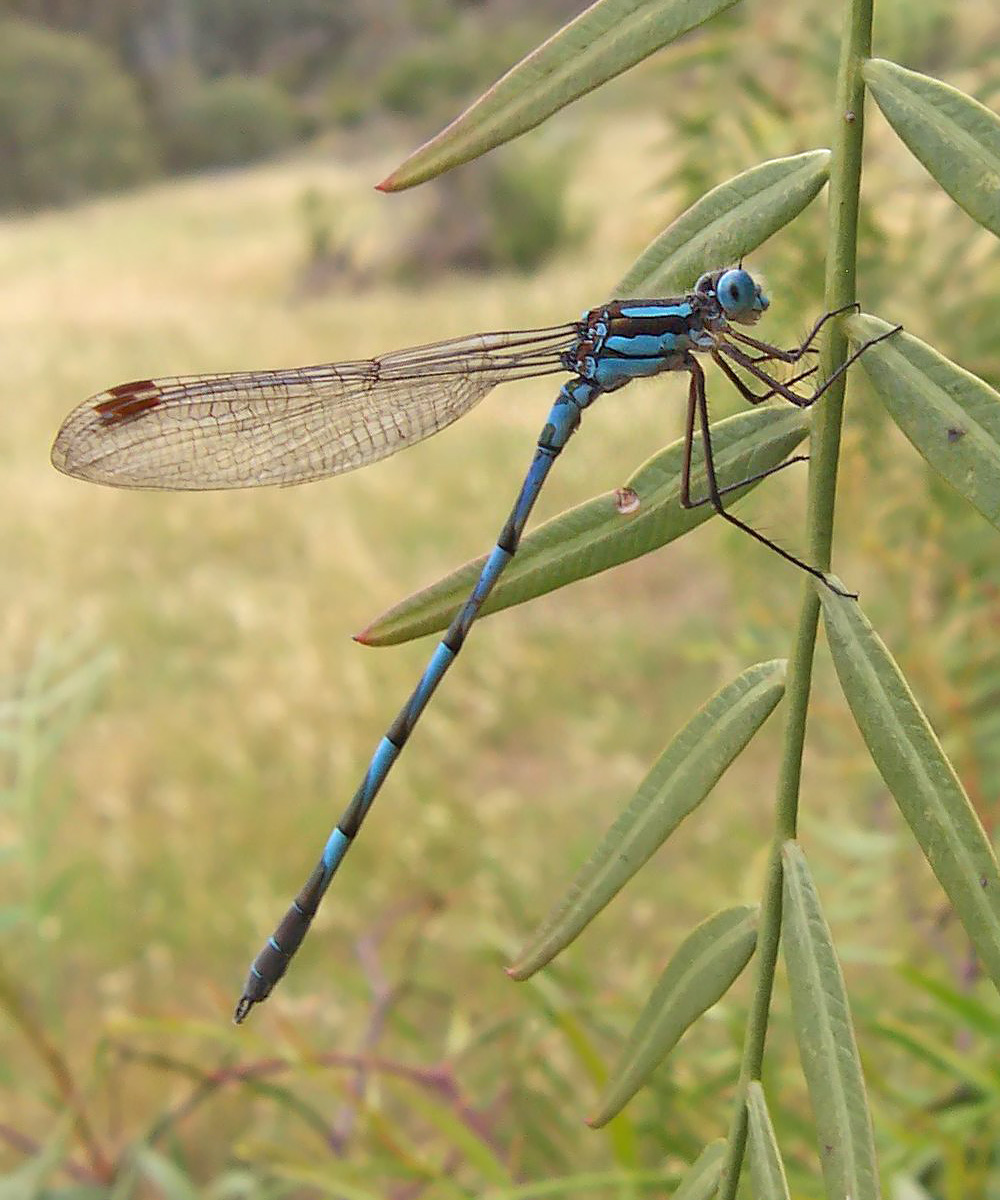|
Celithemis Elisa
The calico pennant (''Celithemis elisa'') is a species of dragonfly in the family Libellulidae. It is native to eastern Canada and eastern United States. Description This dragonfly is 24 to 34 millimeters long, with a hindwing 25 to 30 millimeters long. It can be identified by the brown spots at the bases and tips of the wings. The pterostigma The pterostigma (plural: pterostigmata) is a group of specialized cells in the outer wings of insects, which are often thickened or coloured, and thus stand out from other cells. It is particularly noticeable in dragonflies, but present also in ... is yellow in younger individuals, and red in older. The face is yellow, turning red in older male specimens. The thorax is yellow-brown with a large dark stripe and several smaller brown stripes. The abdomen is dark with paler markings. [...More Info...] [...Related Items...] OR: [Wikipedia] [Google] [Baidu] |
Dragonfly
A dragonfly is a flying insect belonging to the infraorder Anisoptera below the order Odonata. About 3,000 extant species of dragonflies are known. Most are tropical, with fewer species in temperate regions. Loss of wetland habitat threatens dragonfly populations around the world. Adult dragonflies are characterised by a pair of large, multifaceted, compound eyes, two pairs of strong, transparent wings, sometimes with coloured patches, and an elongated body. Many dragonflies have brilliant iridescent or metallic colours produced by structural coloration, making them conspicuous in flight. An adult dragonfly's compound eyes have nearly 24,000 ommatidia each. Dragonflies can be mistaken for the closely related damselflies, which make up the other odonatan infraorder ( Zygoptera) and are similar in body plan, though usually lighter in build; however, the wings of most dragonflies are held flat and away from the body, while damselflies hold their wings folded at rest, al ... [...More Info...] [...Related Items...] OR: [Wikipedia] [Google] [Baidu] |
Libellulidae
The chasers, darters, skimmers, and perchers and their relatives form the Libellulidae, the largest family of dragonflies. It is sometimes considered to contain the Corduliidae as the subfamily Corduliinae and the Macromiidae as the subfamily Macromiinae. Even if these are excluded (as Silsby does), there remains a family of over 1000 species. With nearly worldwide distribution, these are the most commonly encountered dragonflies. The genus '' Libellula'' is mostly New World but also has one of the few endangered odonates from Japan: '' Libellula angelina''. Many of the members of this genus are brightly colored or have banded wings. The related genus '' Plathemis'' includes the whitetails. The genus '' Celithemis'' contains several brightly marked species in the southern United States. Members of the genus '' Sympetrum'' are called darters (or meadowhawks in North America) and are found throughout most of the world, except Australia. Several tropical species in the genera '' Tr ... [...More Info...] [...Related Items...] OR: [Wikipedia] [Google] [Baidu] |
Pterostigma
The pterostigma (plural: pterostigmata) is a group of specialized cells in the outer wings of insects, which are often thickened or coloured, and thus stand out from other cells. It is particularly noticeable in dragonflies, but present also in other insect groups, such as snakeflies, hymenopterans, and megalopterans. It is also often referred to as a stigma. Purpose The pterostigma, a heavier section of the wing than nearby sections, assists in gliding. Without the pterostigmata, self-exciting vibrations known as flutter would set in on the wing above a certain critical speed, making gliding impossible. Tests show that with the pterostigmata, the critical gliding speed is increased 10–25% on one species of dragonfly. Pseudopterostigma Some female damselflies in the family Calopterygidae Calopterygidae is a Family (biology), family of damselfly, damselflies, in the suborder Zygoptera. They are commonly known as the broad-winged damselflies, demoiselles, or jewelwings. The ... [...More Info...] [...Related Items...] OR: [Wikipedia] [Google] [Baidu] |
Odonata Of North America
Odonata is an order of predatory flying insects that includes the dragonflies and damselflies (as well as the '' Epiophlebia'' damsel-dragonflies). The two major groups are distinguished with dragonflies (Anisoptera) usually being bulkier with large compound eyes together and wings spread up or out at rest, while damselflies (suborder Zygoptera) are usually more slender with eyes placed apart and wings folded together along body at rest. Adult odonates can land and perch, but rarely walk. All odonates have aquatic larvae called naiads or nymphs, and all of them, larvae and adults, are carnivorous and are almost entirely insectivorous, although at the larval stage they will eat anything that they can overpower, including small fish, tadpoles, and even adult newts. The adults are superb aerial hunters and their legs are specialised for catching prey in flight. Odonata in its narrow sense forms a subgroup of the broader Odonatoptera, which contains other dragonfly-like insects. T ... [...More Info...] [...Related Items...] OR: [Wikipedia] [Google] [Baidu] |


